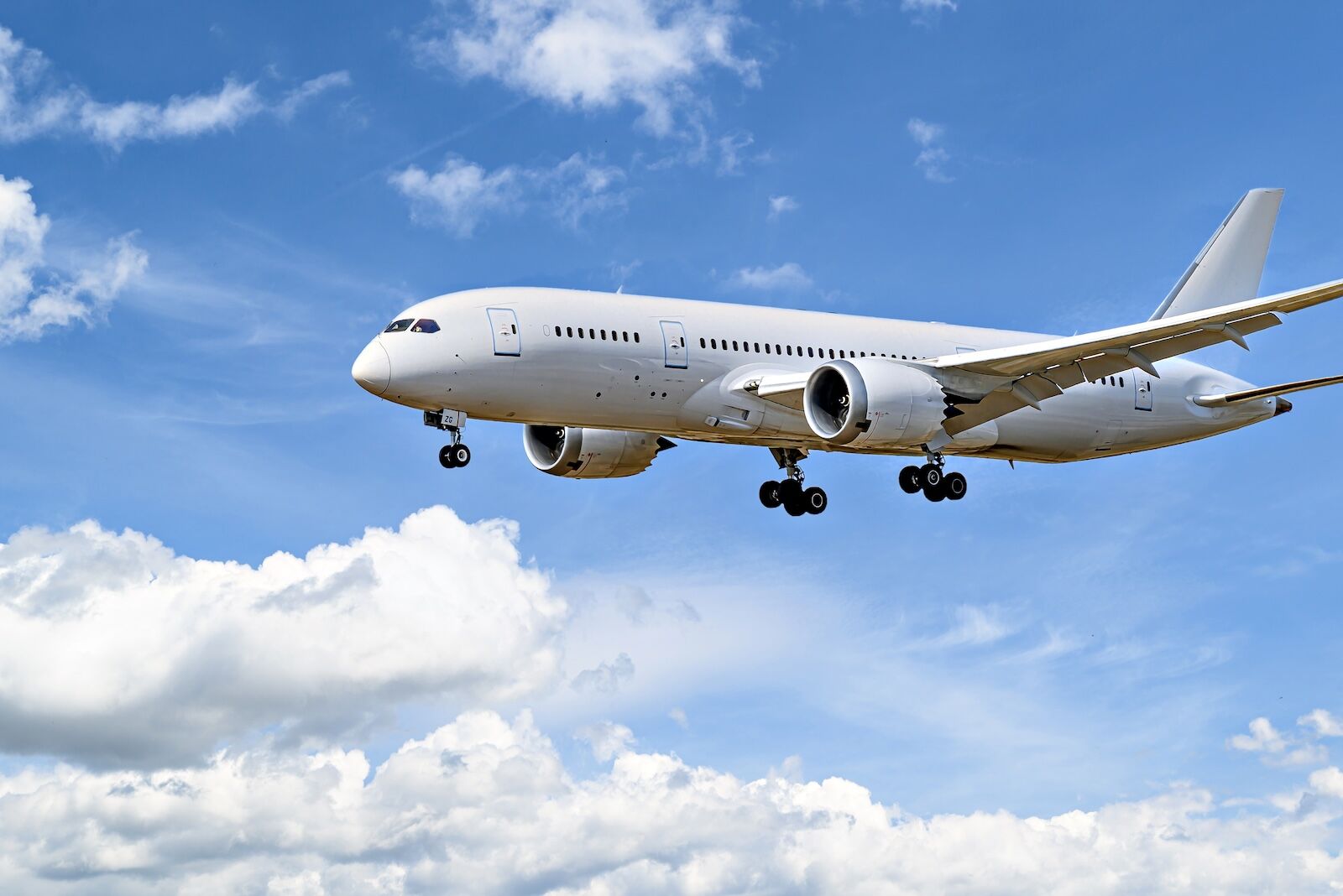For centuries, humans gazed at the sky and imagined what it would be like to soar like birds. Flight has been a dream etched into our collective consciousness, from the myth of Icarus in ancient Greece to Leonardo da Vinci’s sketches of wings that could carry a man through the air. Yet, for all of humanity’s imagination, the sky remained elusive—an invisible barrier separating our earthbound existence from the freedom of clouds and wind. It was only through the understanding of physics, the patient study of air, motion, and force, that humans could turn the dream into reality.
Airplanes are among the most astonishing achievements of modern science, a marriage of engineering, mathematics, and physics. The sight of a plane taking off, soaring, and gliding across continents seems magical, but it is grounded in principles that are as precise as they are beautiful. To understand why planes stay up, we must venture into the subtle dance of air and wing, of energy and force, of lift and thrust, and examine the elegant equations that allow massive metal structures to float hundreds of feet above the ground.
The Four Forces of Flight
Flight is not a matter of mere magic; it is a delicate balance of forces. An airplane in motion experiences four fundamental forces that determine its behavior: lift, weight, thrust, and drag. Lift is the force that pushes the airplane upward against gravity, weight is the force pulling it downward, thrust propels it forward, and drag resists motion through the air. These forces interact continuously, adjusting with the motion of the plane, the angle of its wings, and the density of the atmosphere.
Lift is perhaps the most mysterious and fascinating of these forces. It is what allows a plane to defy gravity, to rise into the sky instead of succumbing to the Earth’s pull. Lift is generated primarily by the wings, whose shape is carefully designed to manipulate the airflow above and below them. The curved top and flatter bottom of a typical wing—called an airfoil—cause air to travel faster over the top surface than the bottom. This difference in speed creates a pressure difference: lower pressure above the wing and higher pressure below. This imbalance produces lift, a force that literally pushes the airplane upward.
But the physics of lift is subtler than it first appears. While Bernoulli’s principle explains part of the effect, Newton’s laws also contribute. As air is deflected downward by the wing, the wing experiences an equal and opposite reaction upward. Every wingbeat of a mechanical bird or deflection of air by a jet wing is an elegant manifestation of Newton’s third law: for every action, there is an equal and opposite reaction. In flight, these laws converge, turning mathematics into motion.
Thrust and Drag: Pushing Through the Sky
Lift alone does not sustain flight; it merely counters gravity. To move forward, a plane requires thrust, generated by engines. Propeller planes use the spinning blades to push air backward, propelling the plane forward. Jet engines expel high-speed streams of exhaust, creating thrust according to Newtonian physics. The amount of thrust must overcome drag, the resistance of air, which constantly opposes motion. Drag increases with speed, surface area, and the shape of the aircraft, making aerodynamics a critical element in airplane design.
Drag is both a challenge and a teacher. It forces engineers to refine shapes, reduce friction, and streamline surfaces. The wings, fuselage, and tail are sculpted not for aesthetic appeal but for the efficient flow of air. Even small protrusions or rough surfaces can increase drag, requiring more fuel and energy to maintain flight. In this way, the invisible tug of drag shapes the very form of airplanes, turning physics into artistry.
The Wing and the Flow of Air
The wing is the star of flight, a structure that embodies centuries of experimentation and understanding. Its design is deceptively simple: a curved top, a flatter bottom, and a slight angle of attack relative to the oncoming air. Yet within this simplicity lies profound complexity. Air behaves like a fluid, but it is invisible, intangible, and unpredictable. It swirls, separates, and accelerates. The wing must guide it precisely, creating lift without causing turbulence that could destabilize the plane.
Angle of attack, the tilt of the wing relative to the airflow, is crucial. A slight upward tilt increases lift, but too much causes the air to separate from the wing, resulting in a stall. Pilots adjust angle and speed carefully, manipulating these invisible forces to maintain stability. Even in modern aircraft with advanced computers, understanding and respecting the flow of air remains vital. Pilots learn to “read the sky,” sensing wind shifts, turbulence, and pressure changes as part of an ongoing dialogue with the atmosphere.
The air itself is a living participant in flight. It has mass, density, and velocity, all of which interact with the wing. At high altitudes, the air is thinner, and lift decreases, requiring faster speeds or larger wing surfaces. Weather, temperature, and humidity all subtly affect flight dynamics. Flying is not merely moving through space; it is negotiating a complex, ever-changing medium that responds, resists, and shapes motion.
The Mathematics of Lift
The beauty of flight is not only in its physical manifestation but also in its mathematical elegance. Lift can be approximated by the equation L = ½ ρ v² A Cₗ, where L is lift, ρ is air density, v is velocity, A is wing area, and Cₗ is the lift coefficient, a dimensionless number representing the wing’s efficiency. Each parameter tells a story: air density varies with altitude, velocity depends on engine thrust, wing area is fixed by design, and the lift coefficient depends on angle of attack and wing shape.
This equation shows why takeoff requires high speed: until the plane reaches sufficient velocity, the wings cannot generate enough lift to overcome gravity. It also illustrates the challenges of high-altitude flight, where thin air reduces ρ, requiring faster speeds or specialized wing designs. In this mathematical framework, pilots and engineers predict behavior, optimize performance, and ensure safety. Physics transforms into a tool of imagination, allowing humans to tame the skies.
Stability and Control
Flight is not merely about staying aloft; it is about maintaining stability and control. A plane without control is a fragile object at the mercy of wind and gravity. Stability comes from the design of the fuselage, tail, and wings, which balance forces and resist unwanted motion. The tail, particularly the horizontal stabilizer, prevents pitching, while vertical stabilizers prevent yaw. Pilots manipulate ailerons, rudders, and elevators to direct the plane with precision, translating human intention into physical response.
Even turbulence, the sudden shifts of air that rattle a plane, can be understood through physics. Air currents move in complex patterns, creating pockets of differing pressure and velocity. The airplane, like a boat on a stormy sea, responds to these changes, rising and falling slightly. Modern designs and advanced materials mitigate these effects, but turbulence remains a vivid reminder that flight is a dynamic negotiation with nature.
Engines and Energy
Energy is the lifeblood of flight. Engines convert fuel into kinetic energy, propelling the plane forward. In jet engines, air is compressed, mixed with fuel, and ignited, producing a high-speed exhaust that pushes the plane forward. Propellers achieve similar results by accelerating air backward. The efficiency of energy conversion, the management of heat, and the precise control of exhaust all reflect deep physical principles applied ingeniously.
Fuel consumption, speed, and altitude are intertwined. Flying higher reduces air resistance, increasing efficiency, but thinner air decreases lift. Engineers balance these factors, optimizing design and operation. Each flight is a living application of energy conservation, thermodynamics, and fluid mechanics, illustrating how abstract physics governs practical reality.
The Subtle Dance of Forces
Flight is not static; it is an intricate, continuous negotiation of forces. Lift must always balance weight, thrust must exceed drag, and the plane must remain stable in all three axes. Every maneuver, from gentle banking to steep ascent, involves recalculating forces in real time. The pilot’s hand and the autopilot computer engage in an endless dialogue with physics, adjusting thrust, controlling angles, and responding to environmental changes.
Even small innovations, like winglets at the tips of wings, have profound effects. They reduce vortices that increase drag, improving efficiency and stability. Flight is a domain where tiny adjustments ripple across forces, demonstrating the precision and elegance of physical law in action.
The Human Perspective
For passengers, flight is often experienced as routine: seats, meals, and occasional turbulence. Yet understanding the physics reveals a deeper wonder. A 200-ton aircraft, carrying hundreds of people, floats effortlessly above the Earth because of principles formulated centuries ago. The air, invisible and intangible, responds to the shape of the wing, the motion of the plane, and the energy provided by engines. Gravity, a constant pull, is counteracted not by magic but by precise, measurable forces.
Flight connects humans to the natural world in ways both practical and poetic. It embodies the marriage of intellect and imagination, showing how abstract concepts can be transformed into tangible experience. It reminds us that mastery of nature is not domination but understanding, a partnership built on observation, experimentation, and insight.
Beyond Airplanes: The Physics of Flight in Nature
Airplanes are human-engineered wings, but flight is older than humanity. Birds, bats, and insects have evolved natural mechanisms for lift, thrust, and control. Bird wings are flexible, capable of altering shape mid-flight to optimize lift and minimize drag. Bats manipulate membranes to achieve agile maneuvers. Insects exploit rapid wingbeats and resonance to hover and dart with precision. Studying these natural flyers has inspired engineers in designing drones and advanced aircraft. Physics is universal, whether in the flapping of a sparrow or the thrust of a jumbo jet.
The Future of Flight
Understanding the physics of flight is not a static achievement; it is a living field. Advances in materials science, aerodynamics, and propulsion promise lighter, faster, and more efficient aircraft. Electric engines, supersonic travel, and even experimental vehicles like the spaceplane expand the boundaries of what is possible. Yet all innovations rest on the same foundation: the principles of lift, thrust, drag, and weight, and the subtle interplay of forces that allow an object to rise into the sky.
Flight continues to inspire not only engineers and scientists but also dreamers. It demonstrates that understanding nature, applying mathematics, and harnessing energy can transform dreams into reality. The physics of flight is, in essence, the poetry of motion rendered in precise, elegant law.
Conclusion: The Wonder of Staying Up
Airplanes stay up not because of magic, but because of human ingenuity applied to the natural world. Lift counteracts gravity, engines provide thrust to overcome drag, and wings and tails ensure stability and control. Every takeoff, ascent, and cruise is a living demonstration of physics in action.
The marvel of flight lies not merely in the technology but in the insight that allows humans to harness invisible forces. It connects us to centuries of discovery, from early dreamers to modern engineers, and reminds us that the sky, once a symbol of impossibility, can be traversed through understanding, calculation, and courage. To fly is to witness the sublime interplay of forces that govern the universe, to dance with air and energy, and to experience firsthand the elegance of physics made tangible.
In every airplane gliding above clouds, in every jet streaking across continents, lies a story of curiosity, intellect, and imagination. Flight is more than transportation; it is a testament to what humans can achieve when they unlock the secrets of nature. The physics of flight transforms metal into motion, energy into elevation, and dreams into reality, showing us that the sky is not the limit—it is a canvas for understanding, innovation, and wonder.






